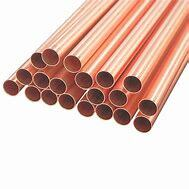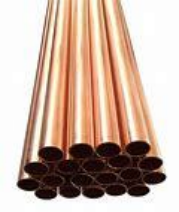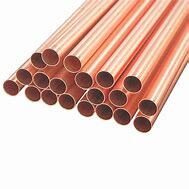1. Introduction
Just 24 hours ago, a major utility provider in Texas announced a $12 million infrastructure upgrade focused on improving grounding reliability across its substations—centered around the deployment of copper bonded earthing rods. This move underscores a growing trend: as electrical systems become more sensitive and renewable energy installations expand, the demand for high-conductivity, corrosion-resistant grounding solutions like copper rod and copper clad steel earth rod is surging.

While many associate copper rods with basic electrical wiring or plumbing, their role in advanced industrial and safety-critical applications is far more nuanced. From ensuring lightning protection in wind farms to enabling flawless copper-to-copper brazing in aerospace components, copper rods are quietly powering some of today’s most demanding technologies.
2. Copper Rods in Electrical Earthing Systems
One of the most vital niche uses of copper rod is in earthing—also known as grounding—where safety and conductivity are non-negotiable. The copper earth rod (or ground rod copper) is driven into the soil to create a low-resistance path for fault currents, protecting both equipment and human life.
Pure copper rods offer excellent conductivity but come at a premium price. That’s why many engineers now opt for copper bonded ground rods or copper clad steel ground rods. These combine the corrosion resistance and surface conductivity of copper with the tensile strength of steel, offering a cost-effective balance. The copper bonded steel core ensures the rod won’t bend during installation, while the outer copper layer maintains electrical performance.
- Copper bonded earthing rod lasts 2–3 times longer than galvanized steel in corrosive soils
- Copper clad earth rod meets IEEE 80 and IEC 62561 standards for grounding
- Earthing rod price varies widely: pure copper rods can cost 2–4x more than copper-clad alternatives
For large-scale projects like data centers or solar farms, specifiers often pair these rods with copper strip for earthing—typically flat copper strips like 25x3mm copper earth strip—to create a robust grounding grid. The copper strip price is another factor, but its flexibility and ease of connection make it ideal for complex layouts.

3. Specialized Welding and Brazing with Copper Rods
Beyond grounding, copper rods play a crucial role in high-precision metal joining. Unlike steel, copper has high thermal conductivity, which makes welding tricky—but not impossible with the right consumables.
Copper welding rod and copper brazing rod formulations are engineered for specific alloys and joint types. For instance, copper to copper welding rod is often phosphorus-deoxidized to prevent porosity, while copper to copper brazing rods may contain silver to lower melting points and improve flow.
Industries like HVAC rely heavily on these techniques. When repairing or assembling air conditioning copper pipe systems—using 15mm copper tube or 22mm copper pipe—technicians often use copper rod for welding or brazing joints that must withstand high pressure and thermal cycling. Proper copper pipe soldering ensures leak-free performance in AC copper pipe installations, where even minor flaws can lead to refrigerant loss.
It’s worth noting that copper rod welding isn’t just for pipes. In electrical manufacturing, flexible copper bus bars are sometimes joined using copper welding rods to maintain current-carrying capacity without introducing resistive joints.

4. Material Choices and Market Trends
When sourcing materials, professionals weigh options like copper round bar versus copper bonded variants. Round bar copper is ideal for custom machining of connectors or electrodes, while copper bars for sale in flat or flexible forms serve busbar and grounding applications.
Similarly, copper strip near me searches have spiked as recyclers and fabricators seek thin copper strips, nickel plated copper strip, or beryllium copper strip for electronics shielding and spring contacts. A 1mm copper strip might be used in battery tabs, while copper beryllium strip offers high strength for connectors.
On the recycling side, questions like ‘best way to strip copper wire’ or ‘fast way to strip copper wire’ remain popular—but burning copper wire for scrap is strongly discouraged due to toxic fumes and legal penalties. Instead, mechanical strippers or automated systems are preferred for stripping wire for recycling.
Meanwhile, copper ingot price fluctuations influence everything from copper pipe price to copper rod price, making material selection a strategic decision. For example, using copper clad steel earth rod instead of solid copper can reduce material costs by 40% without sacrificing performance in most soil conditions.
5. Conclusion
From safeguarding megawatt-scale substations with copper earth rods to enabling leak-proof aircon copper tube joints through precision brazing, copper rods are indispensable in high-stakes engineering. Whether you’re comparing earthing rod price options, selecting a copper welding rod for HVAC work, or integrating flat copper strip into a grounding mesh, understanding these niche applications ensures reliability, safety, and cost-efficiency. As infrastructure modernizes and clean energy expands, the humble copper rod will continue to play an outsized role—quietly, but critically.
Our Website founded on October 17, 2012, is a high-tech enterprise committed to the research and development, production, processing, sales and technical services of ceramic relative materials such as Copper. Our products includes but not limited to Boron Carbide Ceramic Products, Boron Nitride Ceramic Products, Silicon Carbide Ceramic Products, Silicon Nitride Ceramic Products, Zirconium Dioxide Ceramic Products, etc. If you are interested, please feel free to contact us.

